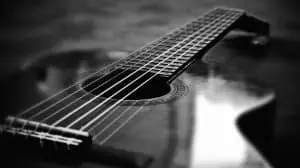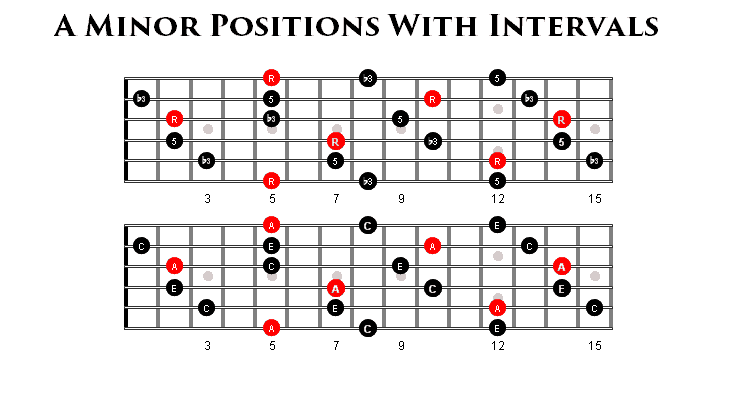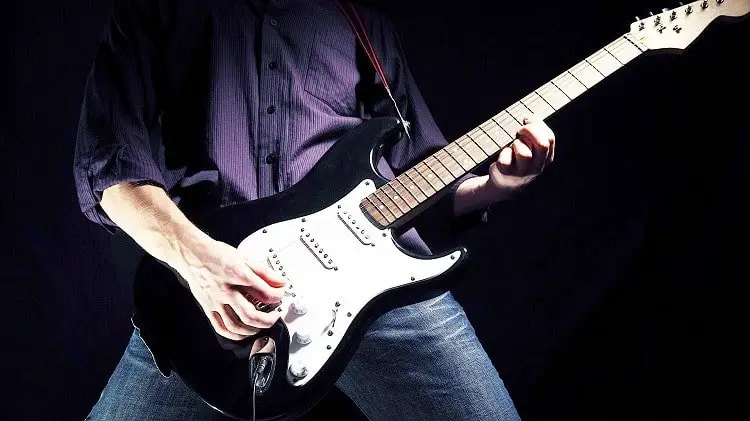 Many melodies you’ll listen, whether vocal or instrumental, will combine arpeggios and some scale movements.
Many melodies you’ll listen, whether vocal or instrumental, will combine arpeggios and some scale movements.
If you insert an arpeggio into normal scale phrases, then you will be able to turn aimless scale kinds of meanderings into far meaningful and complex melodic statements.
So, here we will present some principal characteristics of a minor arpeggio.
Ways of doing it
The easy way for accomplishment here is to be able to do a visualization of the A minor arpeggio within all those well-known scale patterns that were learned.
Because, in that particular way, you will be able to give your precious solos dynamic and fluid mixtures of vertical or horizonta l movement.
Arpeggio A minor in Scales
Every guitar scale that you’ll practice contains its related type types of the chord, and that means also related kind of arpeggio. Because where you got a chord, there’s also an arpeggio.
One of the examples of this is that major scale or pentatonic, contains a major triad, so this can also function in the case of some major arpeggio.
 So, the regular minor kind of scale (and the same pentatonic) got the 1 ♭3 and 5 notes, and that is a regular minor triad. This is also able to function as a classic minor arpeggio. That A minor type of arpeggio always uses exactly 3 notes from regular A minor type of scale.
So, the regular minor kind of scale (and the same pentatonic) got the 1 ♭3 and 5 notes, and that is a regular minor triad. This is also able to function as a classic minor arpeggio. That A minor type of arpeggio always uses exactly 3 notes from regular A minor type of scale.
The first one is A, the third one that is flat is C, and of course, the fifth one notes E. These completely same notes produce minor chord An or also tried if they are performed in their unison. So, the basic concept has a combination of classic scale movements, which means horizontal melody with the vertical melody of the arpeggio.
More useful information
If you move around guitar scale in this way that will surely keep it always connected with those important backing chords. That’s a very easy way to keep your original solos to sound melodic and natural. So this relates not only to the A minor one but also for the all other kinds of arpeggios.
Regular Minor Scale types of Arpeggios
Most classic minor key type of scale contains 7 regular minor kinds of key chords. So, just like working with those major scale kinds of exercises, you must remember this entire tonic pattern, because then you will change that pattern and some other chords that are in guitar scale.
 So, after you become comfortable (or you already are) with performing through regular two-chord changes, then test your personal skills further. Use more complex and faster tracks, like some harder rock backing compilations of tracks for determined and regular practice.
So, after you become comfortable (or you already are) with performing through regular two-chord changes, then test your personal skills further. Use more complex and faster tracks, like some harder rock backing compilations of tracks for determined and regular practice.
Arpeggio for Solos
Well, you can really see how you will learn these patterns of the arpeggio in the right context of those guitar scales you perform. That’s accomplished in a way that this can surely help to easily structure the right phrasing all around that guitar scale.
Also, you can embellish the arpeggio to also include important additional notes from that scale that relates to it.
Conclusion
You can practice all those minor arpeggio forms if you use the completely same root. Also, if you begin from that lowest possible point then you surely play smoothly on guitars neck and also advance your way much higher.
So, I think that this text about A minor arpeggio will prove to be quite useful for you.

